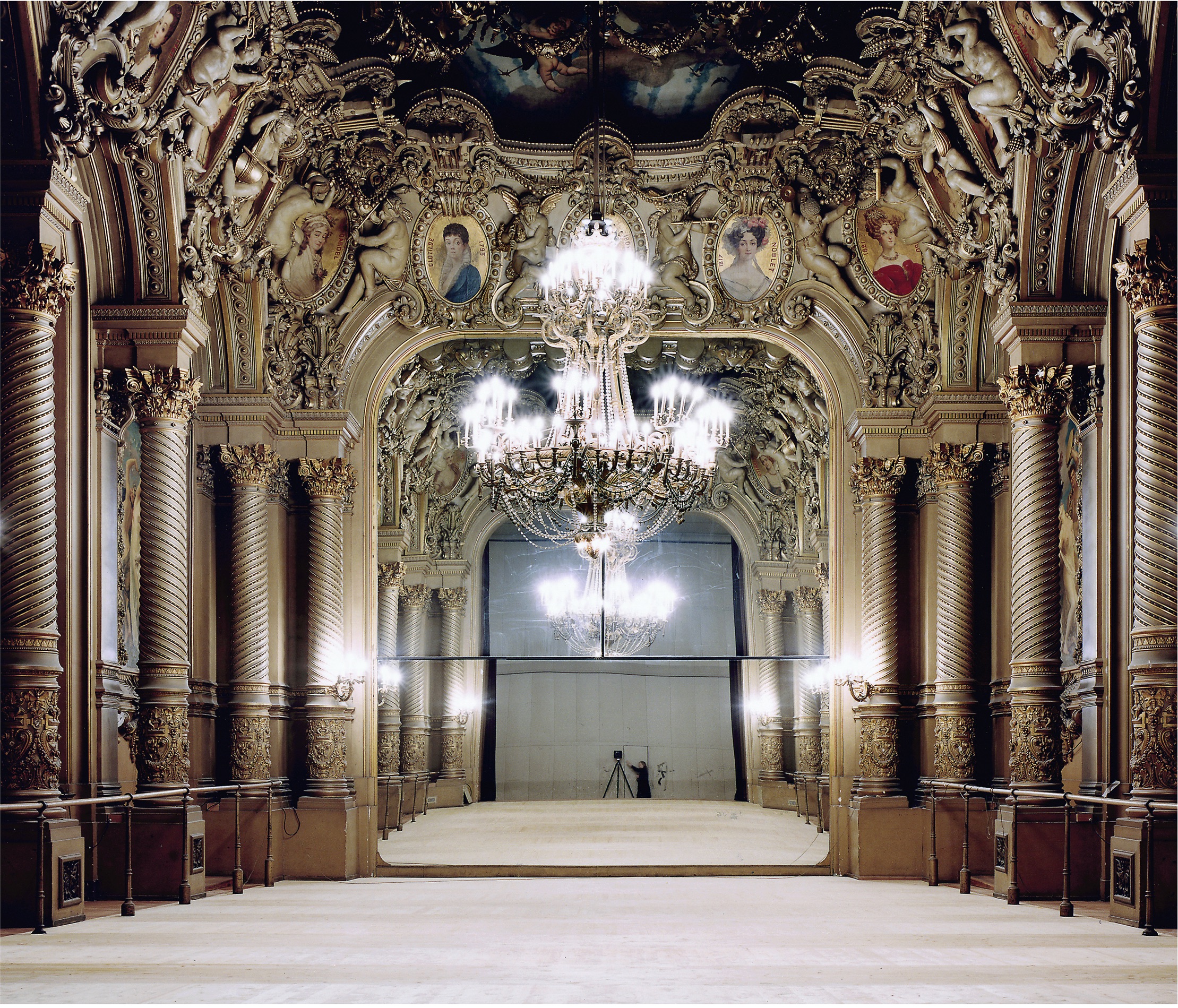
Candida Höfer’s photographs transport me with the fluidity of a Renata Alder novel; like quicksand, they deposit me on another shore with no memory of my journey nor any idea of how to return. Under quarantine, I’ve found myself obsessively returning to them for clues, as to my homesickness for the public and what revelations I could have in honoring this discomfort. I had the pleasure of writing her with some of my most urgent questions and she, to my delight, wrote back in earnest from her own quarantine. I hope you find her answers as illuminating as I did.
How have you been spending your quarantine? Are there any films or books that have been particularly inspiring?
CH: I am cleaning my databases. I am reading the “Crazy Rich Asians” trilogy by Kevin Kwan. I found the movie quite entertaining and now I am on the second volume, but I am afraid I am not going to make it to the third. Beyond that, I look out on the river Rhine—that is quite calming.
In your experiences photographing empty spaces, have you found there is a frequency or sensation that is synonymous with absence?
CH: No, not really. Most of these spaces are enclosed—history gives them density. So do the traces of everyday use. The spaces seem to rest in themselves. This creates, for me, some sort of “filled emptiness.”
Do you ever shout in these empty places? Or do you keep your voice down? (I often find mine quiets in large spaces.)
CH: My assistant and I work in a highly concentrated way, very often without words at all, since we have been working together for such a long time. And beyond that, I am a rather silent person, I think.
The work I’ve seen of yours seems skewed towards public spaces or semi-public spaces. What attracts you to these places rather than people’s medicine cabinets, closets, boudoirs. Are there not the same leftovers and histories to be found?
CH: I guess I am more interested in functions for the public, rather than private histories that would make me feel like I’m intruding into people’s lives. This is why I stopped photographing people so long ago.
Do public spaces have different energies than private spaces? What happens in the in-between?
CH: Yes, exactly. This is what I have tried to say before. The energy of private spaces is almost like a dialogue the person living there is having with herself. Then there are spaces that have conversations with themselves. And finally, there are spaces that function like broadcasts. . .
How does it feel to assert individual control, even momentarily, over a public space?
CH: I do not feel like I have control over a space. What I try to do is to capture what I would call ‘an aspect of a space at a given moment,’ but it always remains an aspect.

Malevich left abstraction for figuration during a time of civil unrest, laying the groundwork for social realism to come. You abandoned figures early on. Can you imagine a condition that would bring them back?
CH: You should never say never. But my turn to spaces was the result of a double realization: I felt uncomfortable intruding upon people even when they were welcoming me. And, at the same time, I realized during my work with Turkish people in Germany [for the artist’s Türken in Deutschland (1972–79) series]—how important spaces are.
How much do you research a space before shooting it? What does that preparation look like?
CH: I read about the spaces. I ask friends who live around there to take snapshots. But I try not to overdo my research. I want to remain open to direct first impressions.
I’ve always wondered if you take other kinds of images when you travel to the places you do, for your own archive. I think about this in chorus with Sontag’s assertion that vacation photography comes out of a desire to work. Do you see your casual photography as an extension of your work?
CH: For quite some time—in parallel with my work with the large camera—I also make images with my handheld digital camera. Impressions of colors, structures, assemblies of things. To some extent, it is a return to my beginning, but without the implications of permissions and organization. It gives me back some of my freedom.
The light is always so exquisite in your images. Do you have to wait for the stars to align? How does one attempt to control the ephemeral on such a large scale?
CH: Yes, this is a big problem, particularly during summer. It depends, of course, also on the architecture, on the availability of technical light in the space. (I work without lightning equipment and always with the light that is in the space, may it be natural or artificial, or both.) I also ask people working in these spaces how the sun travels during the day, whether I can draw the curtains, etc. Sometimes it is a race against time, but, mostly so far, I have been lucky in the end.










 in your life?
in your life?

